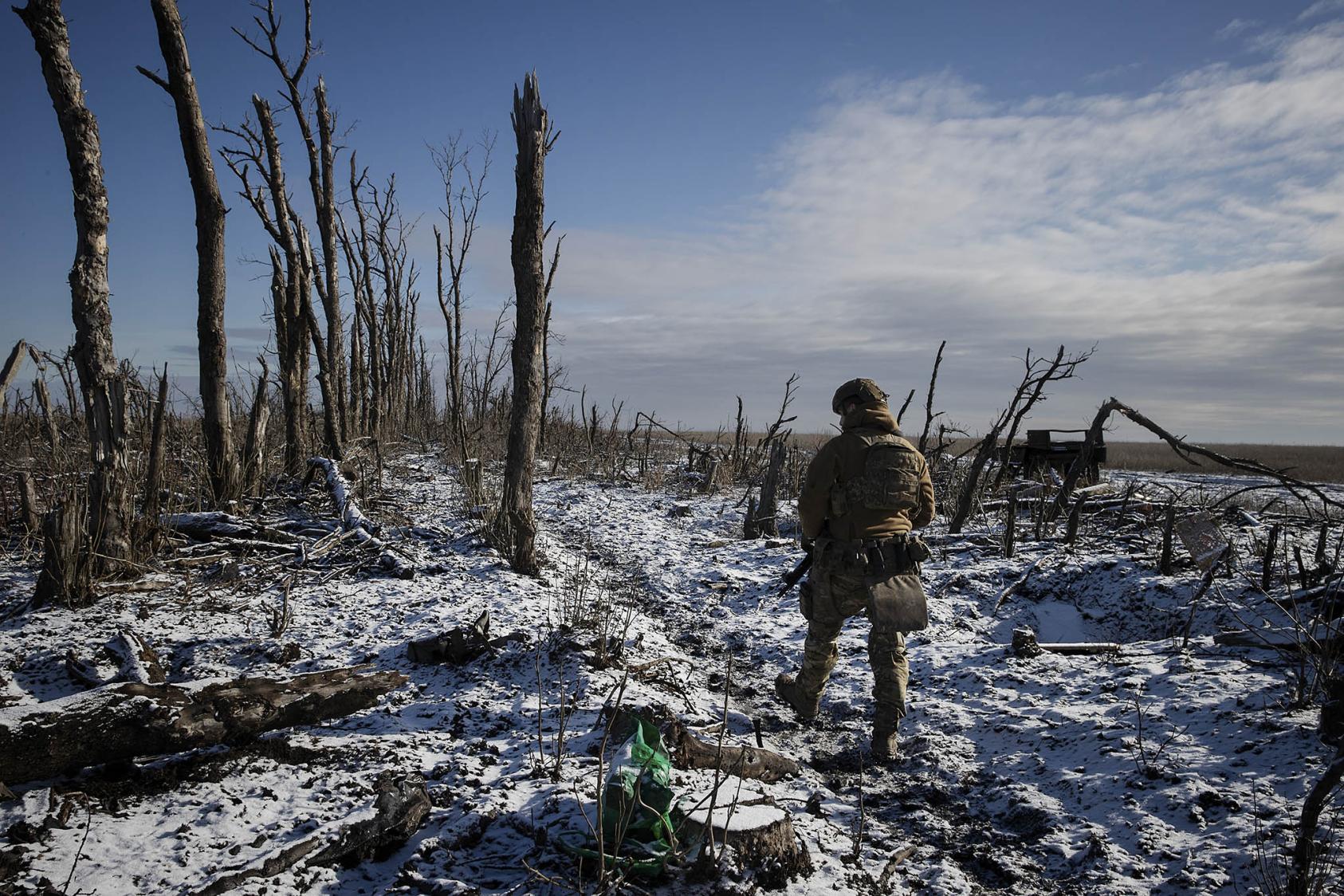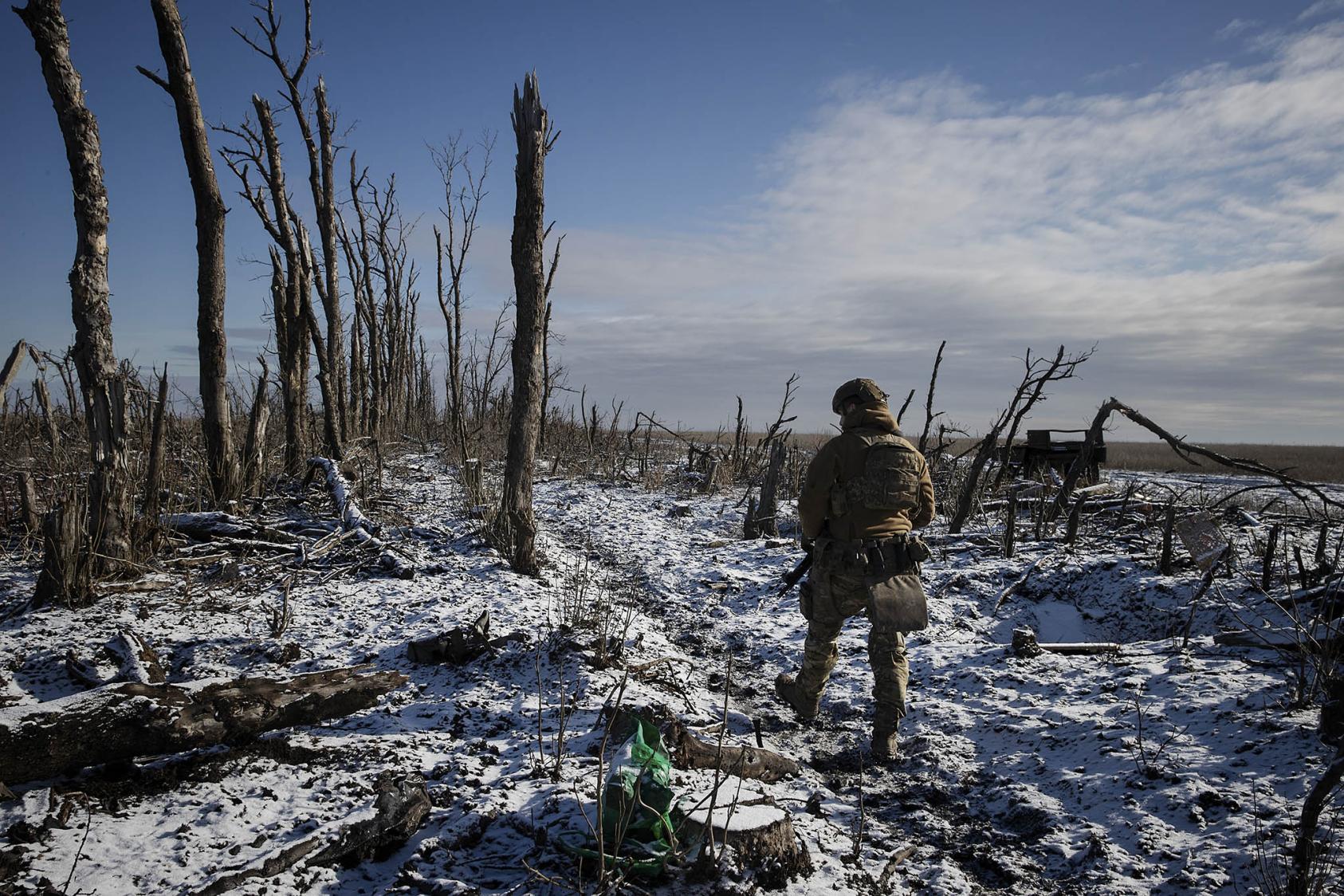Ending a war and its global threats means steady help for Ukraine’s defense.
This week’s U.S. approval of nearly $61 billion in funds for Ukraine’s defense is a lifeline in the Ukrainians’ struggle against Russia’s unprovoked invasion and the assault on peace and rule of law in Europe and beyond. Ukrainian troops have been rationing ammunition, their lack of defensive missiles has exposed Ukrainian cities to Russian aerial attacks — and many military analysts predicted a probable collapse on part of Ukraine’s eastern defensive lines. While this U.S. action boosts Ukrainians’ capacities and morale, ending this war will need further funds, forces and security measures for those fighting and suffering for their survival — and for the redemption of international peace through rule of law.

A Bipartisan Decision…
After months of discussion, America’s action this week was a truly bipartisan passage of the Ukraine Security Supplemental Appropriations Act, 2024 — part of a $95 billion foreign aid package. That package includes three other bills — one on Israel, another for Indo-Pacific security and the third an assortment of foreign policy issues that includes seizing Russian assets and transferring them to Ukraine.
The new law provides $60.8 billion dollars in defense and financial assistance to Ukraine, similar to President Biden’s ask. Most of these funds will go to the U.S. defense sector, including $13.4 billion to replenish U.S. defense stockpiles, $7.3 billion to support U.S. military operations in the region and $13.7 billion to buy new, U.S. defense systems for Ukraine. An additional $14 billion will help Ukraine buy advanced weapons systems and defense equipment elsewhere. The law also requires Washington to transfer long-range Army Tactical Missile Systems (ATACMS) to Ukraine — which the administration already has done — as well as increase oversight on the distribution of funds. Direct financial assistance to Ukraine’s government will be distributed as a no-interest, waivable loan. The aid is to start being delivered within days.
…Vital to Ukraine — and to Our Future World
America’s renewed commitment comes not a moment too soon to help defend against a war of stunning brutality and criminal atrocities that threatens the historic progress since World War II to build a global rule of law. CIA Director William Burns told congressional leaders last week (and most military analysts agreed) that, without this support, Ukraine’s defenses could fail by the end of this year — a victory for authoritarianism that would risk wider global aggression. Without steady supplies of Western-funded equipment, Ukrainian forces were unable to hold portions of their front line, allowing Russia to make incremental gains in the east. Since the beginning of this year, Russia has taken the important town of Avdiivka, along with tiny towns like Mariinka, steps towards Moscow’s goal of controlling all of the eastern Ukrainian provinces of Donetsk and Luhansk.
In particular, Ukraine has been desperately short of artillery and missile defense. Frontline soldiers have been conserving the handfuls of artillery shells they still had; during a trip to Kyiv in January, USIP staff heard anecdotally that soldiers had only about a month of ammunition left. Missile interceptors were in critically short supply. Last Thursday, 18 Ukrainian civilians were killed in a Russian missile strike on Chernihiv that President Volodymyr Zelenskyy said could have been prevented if the country had had sufficient air defense equipment.
Ukraine is now able to resupply. Defense analysts estimate that these funds will allow Ukraine to hold its defensive lines through the end of the year, while it recruits more soldiers. While Ukraine gathers more manpower, defense industrial orders can catch up. A reconstituted Ukrainian army can look toward more offensive operations in 2025.
Options to Institutionalize Funding
President Biden promised in 2022 to stick with Ukraine “for as long as it takes.” More U.S. funds will be needed next year. Western allies should pursue additional funding sources — and are developing options.
European partners, unnerved by recent delays in U.S. funding, have offered additional revenue and acquisition streams to Kyiv. In particular, the Czech Republic’s offer to serve as middleman to link financiers with sellers of 155mm artillery shells for Ukraine is innovative and needed. European states are scouring the continent for additional Patriot defensive missile batteries. Foreign Minister Dmytro Kuleba has requested an additional seven Patriot batteries to better protect Ukraine; Germany has already donated a system and some of the new U.S. funds will provide more.
NATO Secretary General Jens Stoltenberg suggested last month that NATO set up a fund of 100 billion euros to support Ukraine.
Lastly, we favor the option for Washington and Western allies to seize the $330 billion of Russian central bank reserves now frozen in Western banks to finance the reconstruction of Ukraine. The new law gives President Biden the authority to act. In the meantime, allies should quickly tap into the $5 billion a year in interest on Russian assets frozen in the United States and Europe to fund Ukraine’s war effort.
Peace Through Strength
The law’s passage brings relief to Ukrainians and Europeans, but more steps are needed. During the months of debate over this assistance package, the Kremlin took advantage of perceived American weakness, insisting that Ukraine surrender and threatening other European states.
Putin, known to seize upon perceptions of weakness, might yet try to test U.S. and allies’ resolve. In recent months, German Defense Minister Boris Pistorius has repeatedly cited German assessments that Russia could try to do so by attacking a NATO member within five to eight years. A Russia unchecked by Ukraine’s resistance would be freer to start other conflicts — especially in places where its hybrid warfare tactics aren’t gaining ground — whether by trying to mount a coup in Moldova, by encouraging divisions in the Balkans, or, even by attacking NATO allies in the Baltics.
Putin will probe for weaknesses and attack if he finds one. As such, we believe that the best way to prevent further conflict is through strength — projecting a united European and U.S. determination to see Europe whole, free and at peace. Several approaches can bolster this deterrence.
Standing by Ukraine is certainly the highest priority now. With the new assistance approved, the administration can finalize a bilateral security agreement with Ukraine, one of more than two dozen such pacts that Group of Seven and European nations are preparing as a joint security “bridge” for Ukraine pending the country’s accession to NATO. The NATO summit this July should announce steps to make concrete the commitment that the alliance has made to Ukraine and should clearly spell out how it becomes a member of the organization.
NATO also needs to present a strong, deterrent front on its eastern flank. Baltic member states are reinforcing their borders and NATO expeditionary force battalions are being expanded to brigades. These troops could serve both as a deterrent and as a means to pull Russian forces away from Ukraine to protect this line.
This war will end only when the cause of the war ends: Russian soldiers must leave Ukraine. Russia must see that the international community will not accept illegal, unprovoked wars of aggression. It must accept the real independence of nations — from the Baltics to the Balkans to the Caucasus region — that Moscow once ruled through empire and now seeks to control through hybrid warfare or open invasion. To prevent further aggression, we should do what’s necessary to enable Ukraine to defeat Russia in the current war.
